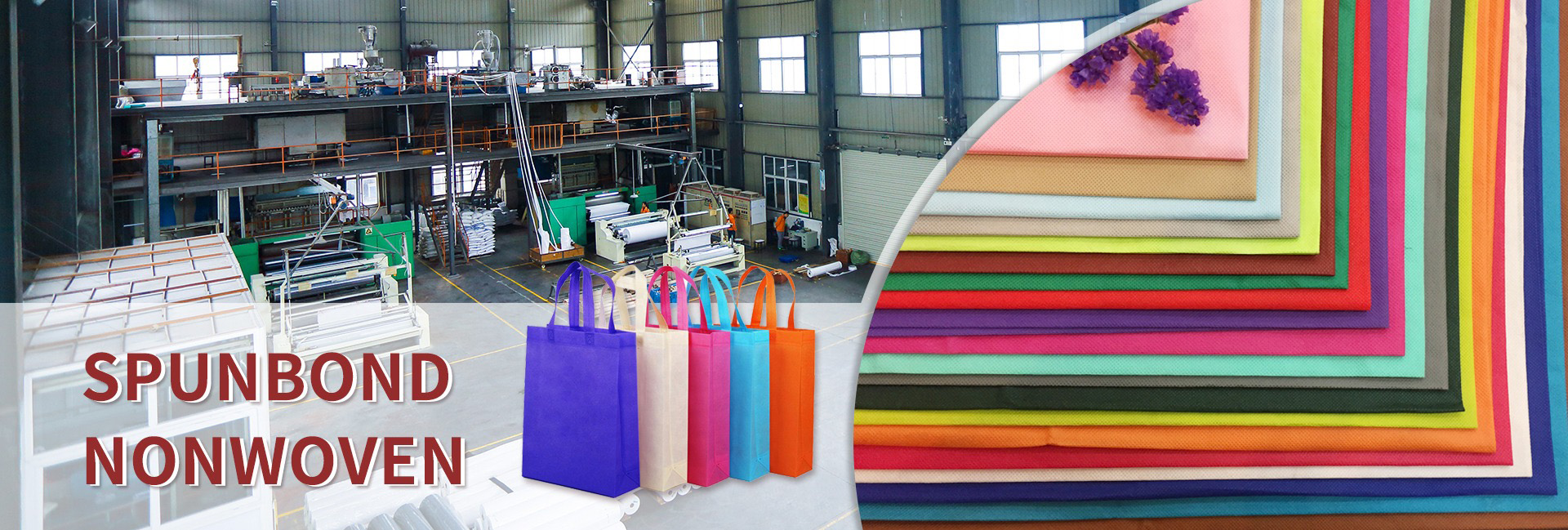Polyester nonwoven fabric (PET non woven fabric) is very suitable as a packaging material, especially in the fields of high-end protective, environmentally friendly packaging, and functional packaging, with significant advantages. Its lightweight, high-strength, customizable, and environmentally friendly characteristics gradually replace traditional plastic and paper packaging. The following is a specific application analysis:
Core advantages and packaging adaptability
Excellent physical performance
High tear resistance: The breaking strength of polyester fiber (≥ 3.5 cN/dtex) far exceeds that of polypropylene (PP) non-woven fabric, and can withstand heavy impact (such as the pass rate of puncture resistance test for electronic product packaging>95%).
Good dimensional stability: resistant to moisture and heat (suitable for -40 ℃~150 ℃), not easily deformed during high-temperature sterilization or cold chain transportation (shrinkage rate<1.5%).
Environmental Protection and Sustainability
Recyclable: Polyester non-woven fabric can be recycled and pelletized multiple times (with a recovery rate of over 70%), meeting EU REACH and US FDA food contact standards.
Degradable option: Some modified polyester fibers (such as PLA/PET blends) have a degradation rate of over 90% after 180 days under industrial composting conditions.
Functional expansion
Moisture barrier: After surface coating with PE film or fluorocarbon coating, the water vapor transmission rate (WVTR) can be reduced to<5 g/㎡· 24h, comparable to aluminum foil composite film.
Anti static/antibacterial: Adding carbon fiber (anti-static) or silver ion coating (antibacterial rate>99.9%), suitable for packaging precision instruments and medical supplies.
Typical packaging application scenarios
1. Industrial and logistics packaging
Electronic product protection:
Used for anti-static packaging of mobile phones, circuit boards, etc. (surface resistance 10 ⁶ -10 ⁹ Ω), needle punched cloth weighing 40-80g/㎡ replaces traditional pearl cotton, reducing weight by 30% and improving shock resistance.
Heavy equipment package:
High weight (150-300g/㎡) polyester felt wraps mechanical parts with a tensile strength greater than 200N/5cm to prevent scratches during transportation.
2. Food and medical packaging
Food grade packaging:
Hot pressed non-woven three-dimensional bag making (such as tea bags and coffee capsules), certified by FDA 21 CFR 177.1630, oil and temperature resistant (suitable for microwave heating).
Case: Starbucks coffee capsules are made of double-layer polyester non-woven fabric (outer layer oxygen barrier+inner layer food grade adhesive).
Medical sterilization packaging:
Breathable polyester cloth (pore size ≤ 0.3 μ m) is used for sterilization bags of medical instruments, with a bacterial inhibition rate of 99.99% (compliant with ISO 11607), and can be sterilized by high temperature steam (135 ℃).
Environmental Protection and Consumer Packaging
Environmental protection shopping bag:
80g/㎡ spunbond polyester fabric is used to make reusable shopping bags, with a load-bearing capacity of ≥ 15kg and a service life of over 100 times (60% lower carbon emissions than plastic bags).
Luxury packaging:
Hot stamping/embossed polyester non-woven fabric replaces silk lining for jewelry boxes and gift bags, combining texture and cost advantages (priced at only 30% of silk).
Process innovation and cost optimization
Application case of technical solution effect
Ultrasonic welding without adhesive bonding to avoid chemical contamination of food packaging sealing edges;Digital direct printing pattern resolution of 1440dpi, color fastness level 4, brand customized gift bag
PLA/PET composite biobased content exceeds 40%, degradation cycle shortened by 50%, disposable environmentally friendly food box outer film coating;Graphene coating improves thermal conductivity by 200%, suitable for cold chain insulation packaging, fresh logistics insulation bags.
Selection precautions
Weight and function matching:
Choose 40-60g/㎡ spunbond fabric for lightweight packaging (such as clothing bags); Choose needle punched felt with a weight of ≥ 150g/㎡ for heavy-duty protection.
Compliance certification:
Food packaging requires FDA/EC1935 certification; Medical packaging requires an ISO 13485 quality management system.
Cost control:
When purchasing in large quantities, recycled polyester (rPET) raw materials can reduce costs by 20-30% (such as H&M clothing bags using 100% rPET).
The limitations of polyester non-woven fabric as a packaging material
1. Poor biodegradability
The main component of breathable polyester non woven fabric is polyester fiber, which is a non degradable material. If not handled properly, it may cause pollution to the environment. Therefore, when using polyester non-woven fabric as packaging material, it is necessary to pay attention to recycling and reuse.
2. Limited breathability
Although polyester non-woven fabric has a certain degree of breath-ability, it may not be as suitable as other materials (such as paper) for packaging scenarios that require high ventilation, such as packaging fresh fruits and vegetables.
3. High cost
Compared to traditional packaging materials, polyester non-woven fabric has a higher production cost and may not be suitable for the cost sensitive low-end packaging market.
4. Limited high temperature resistance
Although polyester non-woven fabric has certain temperature resistance, its performance may be affected in extreme high temperature environments (such as over 200 ℃), making it unsuitable for high-temperature packaging scenarios.
Conclusion
Polyester non-woven fabric has dual advantages of performance and environmental protection in the packaging field, especially suitable for:High end protective packaging (electronics, equipment);Food and medical sterile packaging;Environmentally friendly and recyclable packaging (shopping bags, gift bags).
Overall, polyester non-woven fabric is suitable for scenarios that require high packaging performance, such as industrial, medical, food, and high-end gift packaging. In the future development, with the advancement of environmental protection technology and the reduction of costs, the application of polyester non-woven fabric in the packaging field will be more extensive and diversified.
Development trend: Combining functions such as smart tags (RFID implantation) and active coatings (oxygen indicators), evolving towards intelligent packaging. When selecting, it is necessary to optimize the weight and process according to the load-bearing requirements, barrier level, and certification requirements.
Dongguan Liansheng Non woven Technology Co., Ltd. was established in May 2020. It is a large-scale non-woven fabric production enterprise integrating research and development, production, and sales. It can produce various colors of PP spunbond non-woven fabrics with a width of less than 3.2 meters from 9 grams to 300 grams.
Post time: Jun-25-2025

